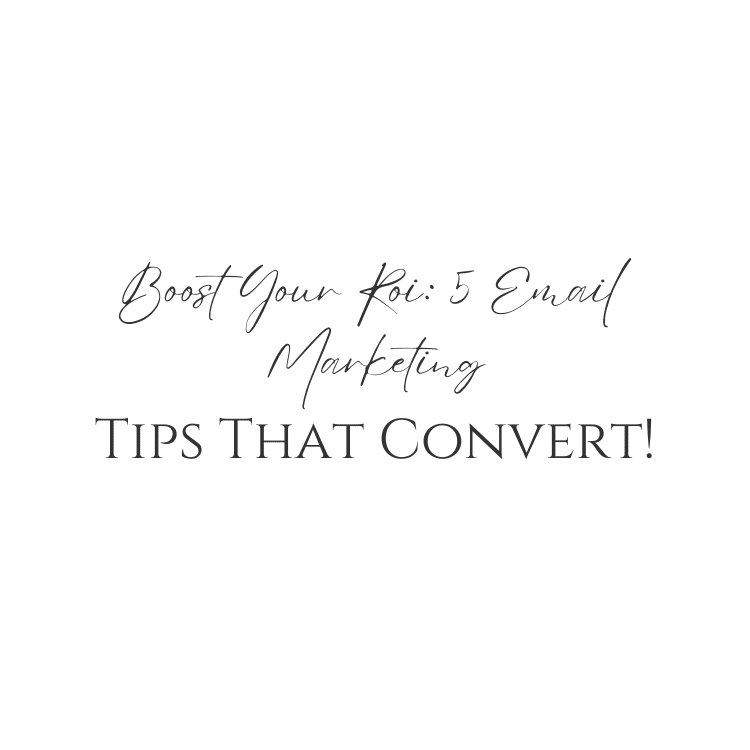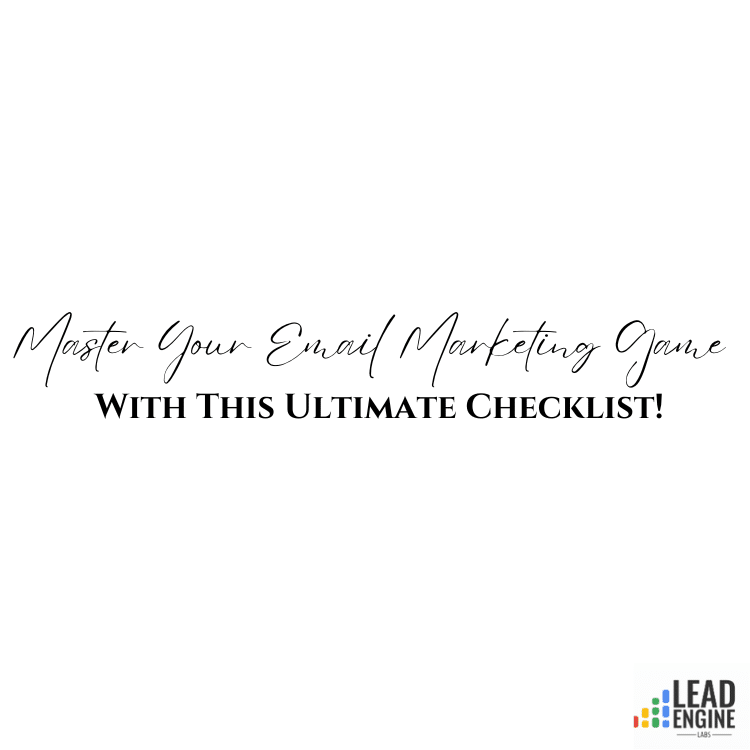Imagine you’re a farmer who has invested in a plot of land. You’ve put in the time, effort, and resources to cultivate your crops, but your harvest is meager. You’re frustrated because you know your competitors are reaping bountiful yields. What could they be doing differently? The answer lies in their approach to marketing.

And just like a farmer, you too can cultivate a successful email marketing campaign that yields impressive results. Email marketing is the backbone of digital marketing, and when executed correctly, it can produce a return on investment that’s hard to match.
Unfortunately, many businesses struggle to make the most of this powerful marketing tool. That’s why we’ve compiled a list of five email marketing tips that will help you boost your ROI and increase your conversion rates. By analyzing user behavior, incorporating social media, and taking advantage of the latest email marketing techniques, you can establish your brand’s authority and produce more than expected rewards.
So let’s get started!
Key Takeaways
- Email marketing is a highly effective way to improve your business, with an average return on investment of $44.25 for every $1 spent.
- To make the most of email marketing, analyze email activity, conduct surveys, integrate social media, encourage engagement, and retarget emails based on site activity.
- Email marketing is three times more effective than social media for engaging customers on a personal level and can provide valuable insights into user behavior.
- To boost your ROI with email marketing, focus on content over design, offer sneak peeks into exclusive content, reserve freebies for follow-up emails, and use triggered emails within an hour of a trigger event.
Effective Email Marketing Strategies
You can maximize your ROI by implementing effective email strategies. Personalization techniques, such as using the recipient’s name and segmenting your list, can significantly improve open rates and click-through rates.

It’s also important to analyze email activity to understand your customers’ behavior and preferences. Use testing and tracking to gain insights into what works and what doesn’t. Conduct surveys to directly ask customers about their needs and opinions. This data can help you tailor your emails to meet their specific needs, increasing engagement and conversions.
Email automation best practices can also improve your email marketing performance. Automated emails can save you time and increase revenue. For example, welcome emails have an average open rate of 82%, making them a great opportunity to introduce your brand and offer a special incentive to new subscribers.
Retargeting emails based on site activity can also be effective, reminding customers of products they viewed but didn’t purchase. By implementing effective email strategies and best practices, you can increase engagement, conversions, and ultimately, your ROI.
Analyzing User Behavior
By analyzing the frequency of email opens and clicks, you can gain valuable insight into what type of content your audience prefers. Tracking metrics such as open rates, click-through rates, and conversion rates can help you segment your audience and tailor your content to their preferences.

For example, if you notice that a certain segment of your audience consistently opens and clicks on emails about a particular product or service, you can create more targeted content around that topic to increase engagement and conversions.
Customer segmentation is also an important aspect of analyzing user behavior. By segmenting your audience based on demographics, past behavior, and interests, you can create more personalized and relevant content. This can lead to higher open and click-through rates, as well as increased customer loyalty and engagement.
Use the data you gather from tracking metrics and customer segmentation to continually refine and improve your email marketing strategy.
Integrating Social Media
Integrating social media can amplify the impact of your email marketing efforts and expand your reach to a wider audience. By incorporating social media into your email marketing strategy, you can increase the chances of your content being shared, which in turn can lead to more subscribers and increased brand awareness. Best practices for social media integration include prominently displaying social media icons in your emails, encouraging subscribers to share your content, and creating social media campaigns that complement your email campaigns.
Measuring the success of your social media integration can be done through monitoring engagement metrics such as likes, shares, and comments, as well as tracking referral traffic to your website from social media platforms. By analyzing this data, you can gain insights into what types of content perform best on social media and adjust your strategy accordingly. By effectively integrating social media into your email marketing strategy and measuring its success, you can enhance the effectiveness of your campaigns and boost your ROI.




